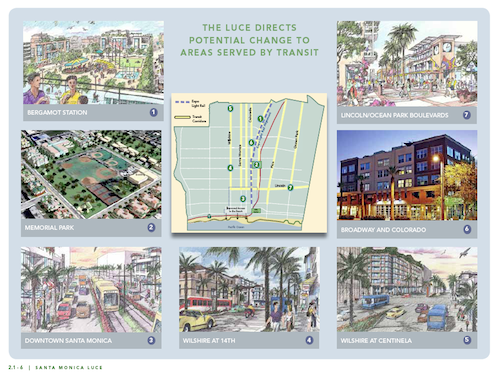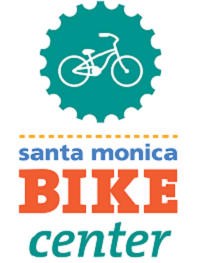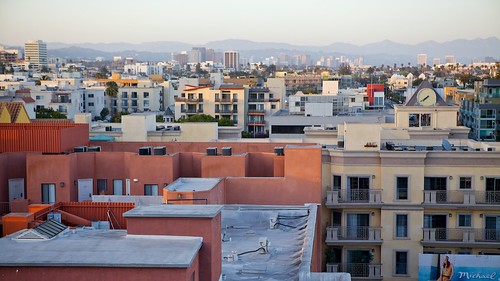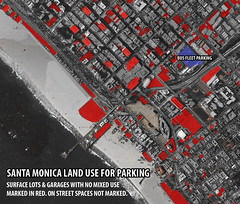Tackling The More Difficult Question Of How Development Should Take Shape in Santa Monica
2:05 PM PST on November 5, 2012

Following up on my outlining the consequences of doing nothing, I wanted to articulate further what kind of development Santa Monica should be pursuing. While it is true I don’t want to halt or tie up development in never ending red tape, that doesn’t mean I believe anything goes should be our approach, or that there aren’t serious concerns.
The easy target is to paint developers as all bad actors. In many ways some of what I consider the most negative impacts of local development in recent decades, are in order to comply with our city zoning rules, or to secure financing according to formulas made by the federal government and banks that privilege and warp certain outcomes.
Some people think of development as though it were a universally bad thing, something that has to be washed down to be tolerated. As some commenters rightfully pointed out in my prior column, it’s not entirely irrational to oppose development. Quite a few of the buildings developed in more recent decades fit in poorly with the surroundings, by either form and/or function, instigated significantly more car trips, and came up short in feeling like they offered back to the public. Commercial office development was largely contained into it’s designated zone, but allowing it to grow out of scale with housing opportunities fostered a "drive in from somewhere else" culture of commuting.
Before we universally condemn office development, it’s worth noting job creation matters, and unemployment remains persistently high.
If there are negative consequences to doing nothing, and negative consequences to some of what had been before, so what then should we do to go forward from here? It’s not a simple answer, but we have to toss out the idea that are simple answers to these kinds of questions It’s about finding a balance of interests, while maintaining the rights for landowners to develop, renovate and redevelop their properties. Our LUCE planning document gives what I feel is a solid foundation and direction, but how it’s implemented, and the how we define the legally binding zoning updates to come shortly, allows for a lot of variability.
There is also one goal in the LUCE that seems may have been misinterpreted by some that states “the ratio of residential to nonresidential uses should be 40/60” (p. 112/532) for the Bergamot district. I get the impression even a few of the council members who voted to pass the LUCE, originally had interpreted that statement as a 40/60 split goal for the outcome of the entire district. However it is actually articulated as a goal for new development added to the district.
With how much of the area is already built out as completely commercial units, striving for a 40/60 residential/commercial mix only on new development would still leave the area extremely weighted to commercial use. We should consider striving for more housing in the mix for the district to create opportunities for people to live and walk to existing jobs in the area. As well as to support local retail and eateries at all hours instead of just the “lunch crunch”. I happen to work in the heavily “creative office” immediate area. What’s really needed is more diversity of uses.
I have a hunch that if you took residents around the city asked them to rate which buildings of various types they find the most charming or fitting in with the neighborhood, from single family home to multi-level apartment buildings, you’d find many of the most loved buildings would be entirely illegal to build under existing zoning without the cumbersome process of getting exemptions. The stylistic choices that many love are also corned by many of today's architects, but aesthetics is a whole other lengthy issue that would require its own post.
Going back to that new development proposed on 14th Street, if you wanted to make something like the apartments right next to it, you couldn’t. The mix of unit sizes at the apartments in the property next door are not standard and include a couple of especially tiny units, there is not enough setback from the sidewalk, and the number of parking spaces for each unit are too low, with no underground cavern for storing multiple cars for every unit. All of these “deficiencies” also result in more affordable rental rates than most of what is offered in the area, and enough open space for a wonderful central courtyard space shared by residents.
There has also been a lot of emphasis on community benefits to go along with new development. In the past some of what has been offered as community benefits never amounted to what was promised, or quasi private public spaces that were included as public benefits were designed in such a manner as to feel disconnected and remote from the surrounding community.
A point city council candidate Frank Gruber had made a number of times on his former Santa Monica Look Out News Column, and reiterated for the Daily Press questionnaire, is that if we get the architecture and mix of uses right, all but the biggest projects add to the value of the community in a way that does not have to feel like a sacrifice we must be heavily compensated for by some other means. Gruber has also been consistently critical of there being too much commercial office development called for in the LUCE ratios, going way back in his column, despite some claims that Gruber is some kind of unquestioningly pro-development candidate.
Some development will happen in Santa Monica in the comings years, it’s inevitable. Our city is an attractive place to live, visit and do business. Despite the claims of some that we are entirely built out, there’s a lot of vacant real estate lots, abandoned buildings or underutilized surface lots that will be attractive sites for infill as auto-sprawl continues to go out of favor and more walkable places become hot spots in the new paradigm we are entering. The coming Expo Line will add further to the desirability of Santa Monica by enabling access the growing regional transit network.
If we do not provide new housing opportunities given our existing job centers and the trends and demographic shifts in motion, I believe Santa Monica will become an ever more expensive and exclusive place to live. A report earlier this year, that I listened in on as it was presented to the council, on housing in Santa Monica, found the median age of residents creeping upward, the city failing it’s affordability goals, and was largely met by concerned voices. Nothing in that report was surprising to me at all given the challenges of finding reasonably priced apartments as I began my career in computer animation in Santa Monica.
Clearly there is a disconnect with what young people early in their career and those less affluent face in trying to achieve the goal of living and working in Santa Monica. I know some co-workers who took the drive till you qualify route to keep their Santa Monica job and afford somewhere larger further away. Increasingly however more people, myself included, are not interested in the big house as a dream. We want a short commute and walkable neighborhoods with mixes of uses, and places to bike to without feeling endangered.
I feel incredibly fortunate that I have been able to live here in Santa Monica and found good work right out of school, but the city is still far from accessible to many people who already work here and commute in, sometimes from quite far away in the region, that may wish they could be closer. The difficulty of living here is also reflected in the very small percentage of SMC students who live in the city. These imbalances are not going to be addressed by doing nothing, so I’d like to see more public discourse in Santa Monica's local media shift to how we best add housing, or housing centric mixed use, with buildings of lasting value that fit the character of the community.
(For more information about the city council race in Santa Monica, who the candidates are and their stances on various issues, including transportation and land use, check out the Santa Monica official election page, SMVote.org, with candidate videos and statements, the Daily Press coverage and questionnaires, Meet the Candidates posts on The Look Out News and a questionnaire published in the Mirror. The Mirror also just published it's last look at the candidates with final statements from the field of contenders and incumbents)
Stay in touch
Sign up for our free newsletter
More from Streetsblog Los Angeles
Metro Board Funds Free Student Transit Pass Program through July 2025
Metro student free passes funded another year - plus other updates from today's Metro board meeting
Eyes on the Street: New Lincoln Park Avenue Bike Lanes
The recently installed 1.25-mile long bikeway spans Lincoln Park Avenue, Flora Avenue, and Sierra Street - it's arguably the first new bike facility of the Measure HLA era







